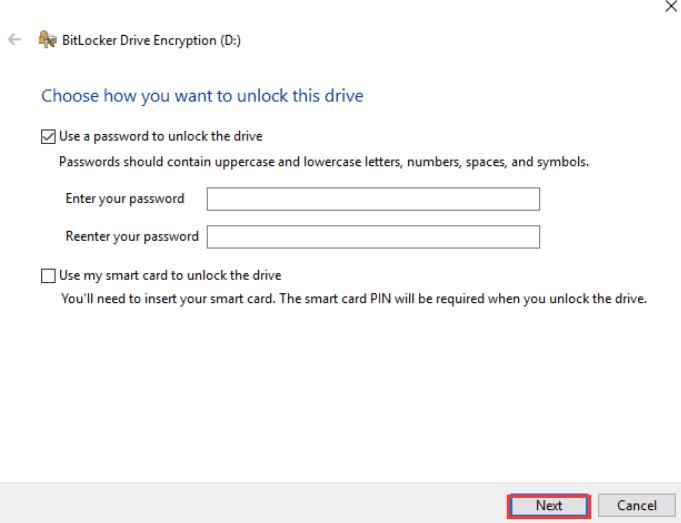How to Password Protect Internal/External Hard Drive in Windows 10
Protecting your internal and external hard drives is crucial, we offer you 2 useful solutions to password protect your internal and external hard drives in Windows 11/10/8/7/XP/Vista.
How to Password Protect Internal Hard Drive with Hard Drive Encryption Software
IUWEsoft Password Protect Folder Pro is the best Internal Hard Drive Lock software which can hide, password-protect and disguise files, folders and drives in Windows 11/10/8/7/XP/Vista.
2 Steps to Password Protect and Decrypt an Internal Hard Drive
Step 1: Download, install and launch the Internal Hard Drive Encryption Software. Click "Protect USB" button, select an Internal Hard Drive and click "Password USB Drive" button, input password and click "Lock" button.



Step 2: Please go back to the main interface, select the locked drive and click "Unlock" to unlock the Internal Hard Drive.



How to Password Protect External Hard Drive Using BitLocker
Since external hard drives are removable, anyone on any computer can access unprotected external drives. This is a huge potential threat to the safety of the external drive and the data stored on it. The following will show you how to password protect an external hard drive on Windows 10.
Step 1: Connect your external hard drive via USB and backup your device. If you haven't already, we recommend creating a backup plan to ensure you always have a safe, up-to-date copy of your data.
Step 2: Open File Explorer and identify the desired drive. Right-click to select Turn On BitLocker.

Step 3: Check the box labeled "Use a password to unlock the drive."

Step 4: Enter the password. Then click Next.
Step 5: Choose where you want to save the recovery key. Then click Next.

Step 6: Select Compatibility Mode and click Next.
Step 7: Click "Start Encryption" to complete the process.
